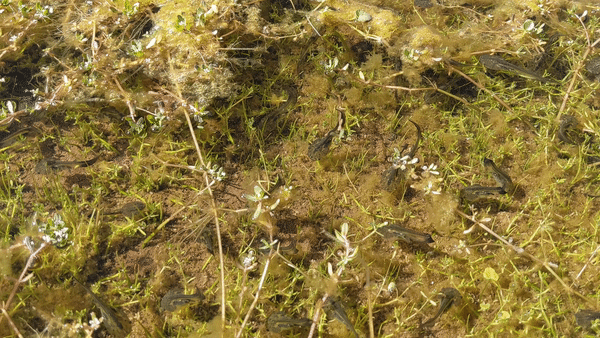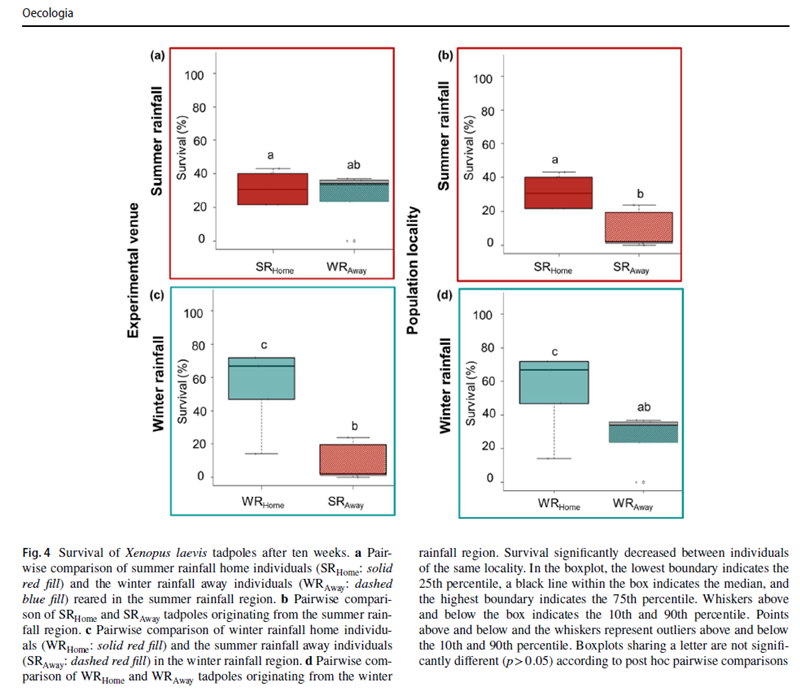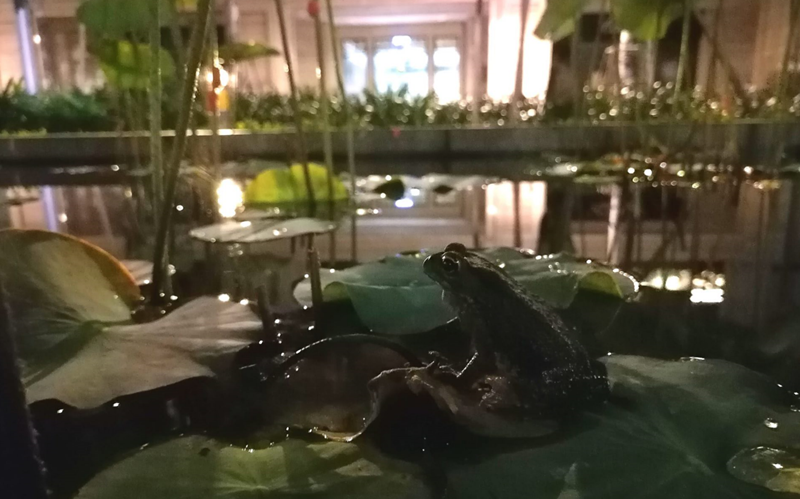The dangers of legislation that blurs the lines between individuals and populations
Recently, Barbara Creecy, Minister of Forestry, Fisheries and the Environment, signed a draft white paper on conservation and sustainable use of South Africa's biodiversity 2022 published in the Government Gazette on 8 July 2022 for consultation where the lines between the moral welfare for individual animals in domestic settings and that of wild populations are blurred. The arguments using Fraser’s “Practical” Ethic for Animals and extrapolating this to a veterinarian view of 'One Welfare' will result in dangers for implementation of existing legislation in South Africa. I hereby provide a commentary on the proposed white paper:

We can expect that Minister Creecy and her advisors had the best intentions when they drafted section 10.4.3 of the draft white paper on conservation and sustainable use of South Africa's biodiversity 2022 published in the Government Gazette on 8 July 2022. However, Fraser’s “Practical” Ethic for Animals essentially provides well for situations in which the welfare of individuals is the subject of investigation (all examples provided by Fawcett et al. 2018), but is unworkable at worst or fails to consider anything more than the ‘precautionary principle’ at best when the scale is moved to populations or species. Here I consider two situations in which Fraser’s “Practical” Ethic for Animals does not consider the needs of populations or species: conservation of populations and control of alien invasive populations. It is noteworthy that Fraser’s “Practical” Ethic for Animals is written to aid one group of veterinary practitioners who treat individual animals, and it is possible that it can provide useful guidance to those involved in animal welfare. Fawcett et al. (2018 - cited in the white paper) attempt to extrapolate these ethics to populations and species, but they do so without providing examples of populations or species, and fail to make any convincing argument. Moreover, if we attempt to apply Fraser’s “Practical” Ethic for Animals to populations or species it fails repeatedly:
-
When managing a population in a conservation area, practitioners may need to increase (in the case of a threatened species) or decrease the size of a population (in the case of an overabundant herbivore). Both situations are relatively common, and I demonstrate below why the 4 points of Fraser’s “Practical” Ethic for Animals do not help conservation practitioners to reach any useful conclusion:
-
-
Point 1 (“to provide good lives for the animals in our care”) is of particular concern as our aim in conserving populations does not include a “good life” for any or all individuals.
-
Point 2 (“to treat suffering with compassion”) never warrants an intervention for individuals that are suffering in a population. The suffering of individuals in a population is of no concern to their conservation. Indeed, we might better consider that within any population, a fraction of individuals will naturally suffer, another fraction will likely have no suffering, while the majority will strike a balance between these extremes with a ‘normal distribution’. Hence, a case for introducing compassion to individuals within a conservation environment can always be made for a proportion of individuals, but it should not happen as the health of the population is paramount over the suffering of any individual. In the case that a population is overabundant, and a culling programme needs to be implemented, the short period of suffering of the individuals culled is offset by the gain to the population and environment more generally by the reduction in their abundance (i.e. the reason for the cull).
-
Point 3 (“to be mindful of unseen harm”) is effectively an oxymoron in that we cannot be mindful of processes that we are not aware of. Most interactions of populations are unknown and although we can attempt at best guesses, these are not different from the ‘precautionary principle’ and this is currently the view that is applied to most decisions in conservation.
-
Point 4 (“to protect the life-sustaining processes and balances of nature”) is no different to existing goals of conservation bodies in South Africa. Indeed, one could argue that Point 4 of Fraser’s “Practical” Ethic for Animals negates both Points 1 and 2 in that we cannot protect the balance of nature at the same time as ensuring good lives and compassion for the animals that live in protected areas.
-
Applying Fraser’s “Practical” Ethic for Animals to the control of a population of alien invasive animals is particularly concerning. Current legislation (the National Environmental Management: Biodiversity Act (Act 10 of 2004) (Biodiversity Act) and subsequent regulations and notices: Alien and Invasive Species Regulations (GNR 598, GG 37885, 1 August 2014) and the Alien and Invasive Species Lists (GN 599, GG 37885, 1 August 2014, as amended by GN 864, GG 40166, 29 July 2016) - hereafter NEM:BA) calls for removal of populations of invasive species in South Africa. Here I take each of Fraser’s “Practical” Ethic for Animals Points in turn and show how they cannot be applied to a population of invasive animals currently regulated under NEM:BA:
-
-
Point 1 (“to provide good lives for the animals in our care”) runs contradictory to the stated aim - “to eliminate…” - it could be argued that instead Fraser’s “Practical” Ethic for Animals be interpreted for the recipient environment, but this would be impractical to implement, and would likely simply repeat the need to remove the invasive population. Can we simultaneously provide good lives for animals that we intend to kill? This would be akin to a farming perspective (not a population) and surely the best outcome for these individuals would be that they are not born (i.e. they do not have lives that need to be ended). This in turn requires the elimination of any potential parents in the invasive population in the most expedient manner - which is the very goal of most eradication programmes. That is to say that Point 1 of Fraser’s “Practical” Ethic for Animals does not help in any way.
-
Point 2 (“to treat suffering with compassion”) requires implementation that is simply not practical when we take Point 1 to its logical conclusion (i.e. elimination of the population in the most expedient manner). We do need to realise that suffering and compassion are likely to be incompatible with elimination of a population. While every effort can be taken to implement an eradication programme in a humane way, the trade-offs between removing potential parents with some suffering compared to the removal of their numerous offspring in a more compassionate manner is not a luxury that most control programmes can afford. Once again, all animal control programmes are constrained by finances that will dictate that populations are removed with immediacy.
-
Point 3 (“to be mindful of unseen harm”) would likely result in increased suffering if we considered the way in which humane killing necessitates the use of drugs that are harmful to the environment to manufacture, distribute, apply and dispose of. Being considerate of ‘unseen harm’ when killing invasive species would therefore run contrary to Point 2. Instead, we are still better to apply the ‘precautionary principle’ at the same time as adhering to existing policies and requirements.
-
Point 4 (“to protect the life-sustaining processes and balances of nature”) cannot apply to invasive populations as they are legislated for removal (and therefore no control programme could be ‘life-sustaining’) and outside of the ‘balance of nature’ which is what many removal programmes seek to restore.
Decisions made in conserving populations are effectively trade-offs where benefits of an intervention will be considered to favour a species at the cost (whether known or unknown) of another. We can be certain that some interventions will benefit certain groups of individuals apparently with negligible costs to others. But conservation environments are already replete with trade-offs that regularly compromise their functioning. Indeed, most proposed interventions are not put into practice because funds to do so are inadequate. When interventions are made, conservationists are acutely aware of the precautionary principle:
“(1) complexity in the natural and social systems that govern the causal relationships between human activities and their consequences and
(2) unquantifiable scientific uncertainty in the characterization and assessment of hazards and risks” (UNESCO 2005)
Hence, when veterinarians are involved in the treatment of individual wild animals in a conservation setting, Fraser’s “Practical” Ethic for Animals provides a good framework to steer decisions made by veterinarians in conjunction with conservation authorities. However, placing these decisions onto populations or species simply does not hold any more benefits than the already widely practised ‘precautionary principle’. Moreover, the ambiguity inherent in the Points made by Fraser do provide a lot of scope for disagreements in terms:
-
What is meant by “good lives”? (Point 1)
-
Can wild animals be considered to be in “our care”? (Point 1)
-
What constitutes “suffering” when applied to populations or species? (Pont 2)
-
The inherent oxymoron between of “mindful” of the unseen (Point 3)
-
Can eradication programmes ever be “life-sustaining” for the populations of invasive species? (Point 4)
-
Which particular “balances of nature” should we favour? (Point 4)
The animals covered by the OIE (now World Organisation for Animal Health: WOAH) are defined as those under “human control” or more specifically: “working animals, companion animals, for production of food, fibre and other animal products, for scientific and educational purposes.” This means that South Africa’s signing of the OIE’s international standards for animal welfare was never meant to cover wild animals, or any animals other than those domesticated species under human control. Hence, the attempt in the white paper to extrapolate this international convention to the welfare of all animals in order to ‘harmonise animal ethics and conservation within a single framework’ is a fundamental misunderstanding of the OIE convention. Similarly, while Fraser (2012) did try to “find common ground between the concerns of conservation biologists and animal welfare scientists”, he failed because he did not take into account the naturally occurring low levels of animal welfare inherent in wild populations that occur in space and time. This is not surprising because Fraser, like those who support his views (Fawcett et al 2018), is a veterinarian. The OIE is also concerned with veterinarians (specifically supporting the role of state vets) and their role in society. Sadly, veterinarians often fail to take into account natural processes for wild animals as they fall outside their remit and experience. The fundamental problem with the Minister’s attempts to link vets to wildlife is that it is unworkable (see points 1 and 2 above). Similarly, an attempt to implement a ‘One Welfare’ approach to wild animal populations is fundamentally flawed as it does not take into account the natural variability in animal welfare inherent in natural populations.
The danger with the wording of the white paper as currently conceived is that it encourages those with an animal welfare viewpoint (not just vets, but a growing proportion of the public including animal rights activists) to look at individual wild animals and demand that they be subjected to Fraser’s “Practical” Ethic. This is likely to result in regular and multiple conflicts between the public and state conservationists, as well as any other statutory bodies that are responsible for populations of wild animals. This white paper is also going to cause direct problems for all state funded and sanctioned control programmes of Alien Invasive Animals.
Instead, I would like the Minister to revert to the widely practised ‘precautionary principle’ (see above), in addition to consequentialism as a far more pragmatic way to consider the welfare of animals in wild populations. Consequentialism differs from Fraser’s “Practical” Ethic for Animals as instead of concentrating on the welfare of individuals, the goodness of their lives and suffering, interventions are considered on the consequences of their outcomes. In such cases, the normal (and legislated) means of a cull or eradication programme are still in place, but the emphasis is instead placed on the outcomes of the intervention for the environment under management (which could be urban, rural or conserved), and a comparison without intervention. Lastly, the implications of the intervention can be considered in line with current practice, but also in the light of the contrast between intervention and no-intervention. This consequentialist framework is more fitting for managing populations (and species) but does not negate existing legislation on animal welfare.
Further Reading (with caution)
Fawcett, A., Mullan, S. and McGreevy, P., 2018. Application of Fraser’s “practical” ethic in veterinary practice, and its compatibility with a “one welfare” framework. Animals, 8(7), p.109.
Fraser, D., 2012. A “practical” ethic for animals. Journal of Agricultural and Environmental Ethics, 25(5), pp.721-746.
UNESCO 2005. The Precautionary Principle - UNESCO Digital Library








